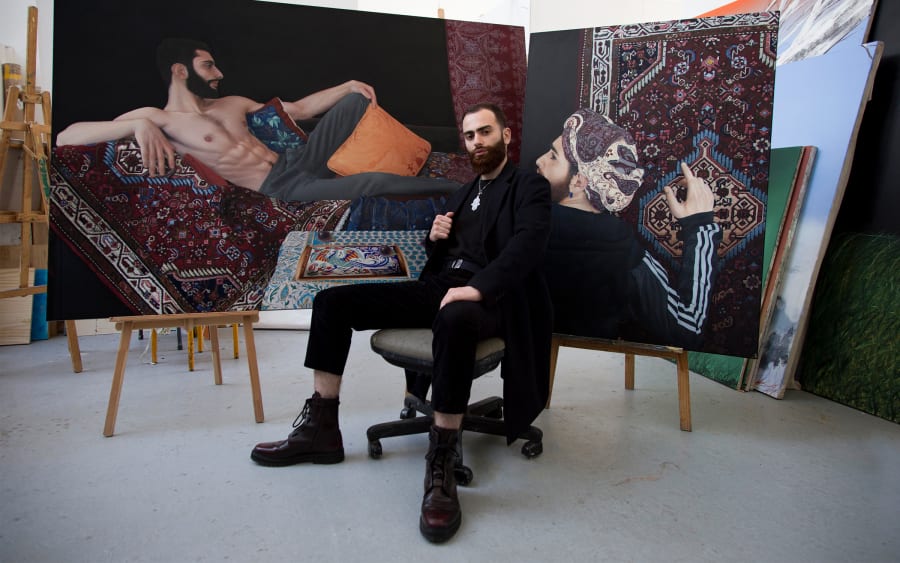‘My intent is to explore themes of memory, place, and belonging,’ says artist Nour Jaouda, speaking from her London studio. ‘Each piece is a timeless object, a landscape of memory that exists in a liminal space.’
Jaouda’s large-scale, cascading textile works explore the interplay between materiality and meaning. The artist finds fabrics in markets near her homes in Cairo and London, then deconstructs and dyes them – using a wide array of vegetal dyes in saturated natural tones – before stitching them into tapestries displaying geometric patterns, botanical forms, and human figures. Her practice also includes metal sculptures that often take the form of architectural elements, like ornate arches and crumbling facades. Deeply rooted in cultural mobility and resilience, her art draws on her childhood in Libya and her experiences of living between Cairo and London. Each thread in her textile pieces seems to traverse the many landscapes that have shaped her nomadic life: ‘I approach color as a physical object that carries memory and meaning, manifesting the hues of the spaces I inhabit,’ she says.
For Union Pacific’s booth in Art Basel’s Statements sector, Jaouda is creating a monumental textile work whose vivid hues and fluid shapes evoke a natural landscape. Suspended across the width of the booth, the piece will hang behind a towering metal gate that looks to both Islamic motifs and the colonial architectural legacies of the British. By incorporating fragments of real gates salvaged from metal yards in Cairo into the design, the artist highlights the tension between preservation and decay, as well as cultural multiplicity. ‘The gate denies direct access to the piece, yet beckons exploration,’ Jaouda explains. ‘Its aesthetic power draws us in, yet denies us entry, compelling us to deconstruct the social and cultural boundaries we encounter and impose on one another.’
Jaouda’s work offers us a glimpse into her belief in the interconnectedness of all things, like the roots of ancient trees – the tree being another recurring theme in the artist’s textile work. Through her practice, she challenges conventional notions of identity and place, inviting viewers to embark on their own journeys of introspection and discovery. ‘Each layer tells a story, each fragment a memory,’ she says. ‘I aim to capture the essence of a rootless existence, exploring the placeless space between the present and the absent, the self and the other.’
Nour Jaouda is represented by Union Pacific (London). Her work will be on view in the Statements sector at Art Basel in Basel.
Sofia Hallström is a writer and artist based in London.
Caption for top image: Nour Jaouda, Roots in the sky (detail), 2024. Courtesy of the artist and Union Pacific.
Published on May 29, 2024.


